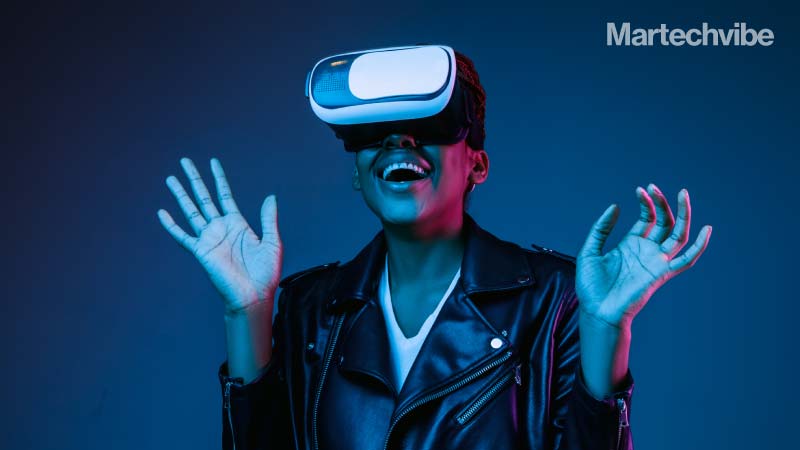Is Augmented Emotions Working?
Since its experimental phase, AR technology has been lapped up by brands. Today, over 60 per cent of customers favour brands with AR experiences Flamingos along the Seine river, a NY City yellow cab on a busy Parisian street, a rainbow over the Eiffel Tower. For a few immersive minutes, the people of Paris experienced […]
Topics

Since its experimental phase, AR technology has been lapped up by brands. Today, over 60 per cent of customers favour brands with AR experiences
Flamingos along the Seine river, a NY City yellow cab on a busy Parisian street, a rainbow over the Eiffel Tower.
For a few immersive minutes, the people of Paris experienced the joyous quirks of Augmented Reality (AR). Delivering this AR application experience was Kate Spade New York when they wanted to open their first brick and mortar location in Paris. Pokemon Go was insanely popular around the time. Kate Spade launched their AR app as a marketing strategy to provide their potential customers with a heart-warming experience and spread brand awareness.
Gone are the days when an emotional experience with AR was a brand experiment. In the last few years, brands have realised AR technology’s true potential as a new way of storytelling. Global brands, including Converse, Cadbury, Lacoste, and IKEA, have already harnessed the emotional strings through this technology. Studies reveal that immersive and emotional experiences connect customers to brands more effectively.
A Statista research study found that mobile AR users are expected to cross the 1 billion mark by 2024. Experts believe that AR wearables will increase the ease of smartphones considerably using intuitive 3D interfaces and controls. Research suggests that the distribution of intelligent AR glasses will reach over 22 million units.
Additionally, the AR market is expected to rise to over $61 billion by 2023. Even Flipkart had acquired a 100 per cent stake in an AR company last year with growing expectations. Apart from the e-commerce and other business industries, the film industry has also increased AR marketing strategies. Expect AR-inspired posters, trailers, and digital campaigns soon enough.
Also Read: How Spotify Has You Humming
So, how does emotional marketing fit in here?
According to The Drum Research, AR can capture a person’s attention for over 80 seconds and increase interaction by 20 per cent. It’s a fact that the mere experience of AR evokes emotions. Brands must spin a creative, empathetic story through AR and not merely a technological thrill.
According to a Sciencedirect study, augmented reality should be customer experience-driven instead of technology-driven. Experts reckon that after an emotional AR experience, the brand must channel the emotional responses into direct word-of-mouth marketing o and not let the emotions dilute the thrill.
Let’s look at Coca Cola. It has always been a brand that centres its marketing campaigns and advertisements on empathy. Partnering with World Wildlife Fund, Coca Cola used the magic mirror AR paradigm in their campaign Arctic Home. At the Science Museum in London, on a white carpet in an arctic-themed room lined with Coca Cola posters, visitors could see themselves interact with a polar bear family. Without warning, the ice starts to break, and the emotionally charged people have flashed the real threats of global warming.
Polar bears have appeared in Coca Cola advertisements since 1922. With the possibility of connecting people with seemingly distant realities, brands leverage AR technology to wrap their customers in an empathetic fact instead of simply showing them a distant emotional video or picture.
No longer being passive recipients of marketing and advertisements, customers can now have a personal connection with the brand. These personal interactions with a screen can evoke emotions. Consider a recent example of Nestlé. Their ‘Promise’ campaign connects every child as they witness a personalised experience with an AR video where they make promises of goodness, including vows to recycle more, help more, and plant more trees. Such experiences elicit feelings and rate lasting impressions.
With the emotional technological experience, customer ambassadors’ growth is highly possible as they would want to share their experiences with the world online. Experts reckon that with AR infused into emotional marketing, brands have the opportunity to not only boost sales but increase customer trust and have a better brand recall.
Also Read: Getting Rational with Emotions
AR Focus into the Future
Industry giants like Google, Apple, and Microsoft are working towards inventing new and improved AR devices that can change the marketing game. Although Google Glass has been around for years, it steadily shifted to an enterprise edition that the industry uses for emotional and experiential marketing. Google acquired a company that creates 3D glasses last year. It indicates that an improved AR device is in the works.
Additionally, with the advent of 5G, brands can easily leverage AR without a worry about customer reach. Research reveals that 5G is set to advance AR applications that could generate over $140 billion between 2021 and 2028. As immersive technology provides more intense and personal experiences, harnessing the AR power to sway customer emotions is the most recommended path forward for every marketer worldwide, as industry and technological experts reckon AR will become mainstream soon.
Watch this space to read one more perspective on emotional marketing






